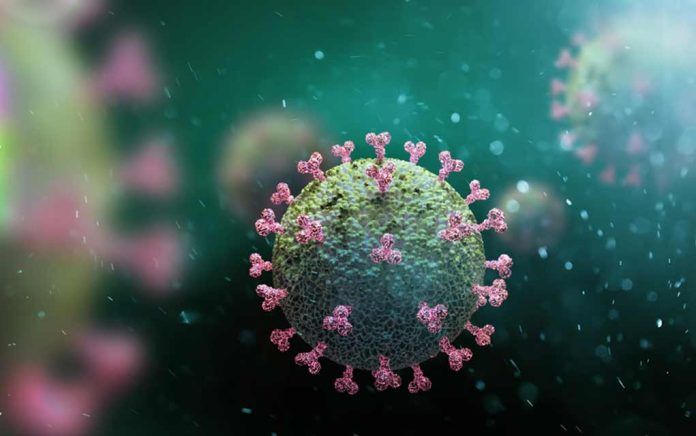
(HealthyResearch.com) – The coronavirus is moving through the United States at terrifying speeds, and we’re just beginning to understand how the infection spreads. With the US death count reaching over 6,000 people as of April 2, and states going on lockdown left and right, researchers are taking a serious look at how long the virus can stay active after a person coughs or sneezes. The results have been mixed at best, but here’s what we know so far.
Most Recent Study
A study conducted specifically on SARS-CoV-2, the coronavirus currently ravaging the world, was just released by the New England Journal of Medicine. The National Institutes of Health released the findings, which showed the novel coronavirus can survive:
- up to 3 hours in the air as an aerosol.
- up to 4 hours on copper.
- up to 24 hours on cardboard.
- up to 3 days on plastic and stainless steel.
And if those numbers aren’t scary enough, a recent finding suggests the above studies could be dangerously optimistic.
A Startling New Discovery
The Diamond Princess cruise ship, which made headlines in February for having passengers quarantined due to an onboard outbreak of the novel coronavirus, has made breaking headlines again. CNBC reported that researchers who examined the ship’s cabins prior to sanitizing found coronavirus RNA on surfaces up to 17 days after the passengers left. This doesn’t necessarily mean the virus can remain viable that long, or that it can be transmitted effectively when it does persist on a surface, but it does press the need for additional testing. Similar results were also found in the Grand Princess cruise ship which docked in Oakland, California after crew and passengers became ill and were quarantined.
Previous Tests on Related Coronaviruses
An article recently published in the Journal of Hospital Infection showed different strains of SARS-CoV-1, the virus that caused the original SARS outbreak in 2002, could persist on numerous surfaces for days. For example, at room temperature:
- Strain P9 could survive on wood and glass for 4 days, on paper for 4 to 5 days and on metal for up to 5 days.
- Strain GVU6109 could live on paper for up to 24 hours and on a disposable gown for up to 2 days.
- Strain HKU39849 could survive for up to 5 days on plastic.
- Strain FFM1 could persist on plastic for a whopping 6 to 9 days.
Other strains of coronaviruses that caused MERS survived for varying lengths of time ranging from a few hours to 8 days.
How to Stay Safe
Until we know more about how long this coronavirus can survive and remain infectious outside a host, it’s best to disinfect everything coming into your home — within reason, of course. For example, you might want to use a virus-approved disinfectant spray on packages and mail rather than dousing everything with a bleach solution. Remember never to mix bleach with any other household cleaner.
When grocery shopping, you might consider taking a supply of disinfectant wipes to wipe off the grocery cart handle and child seat. As you unpack your groceries, you can wipe those down as well.
Knowing the virus can remain on surfaces can be scary and even a big source of anxiety, for some. Try not to worry, though. Infectious disease experts agree that the odds of catching the virus from a surface is low, with the majority of people contracting the coronavirus from person-to-person contact from an infected person.
The new coronavirus could last a long time on surfaces entering your home. Be especially careful about communal items and items that multiple people might have handled, like your mail or packages. And don’t forget to practice good hand hygiene. While the risk of catching COVID-19 from a surface is believed to be low, it can’t hurt to take extra precautions.
~Here’s to Your Health & Safety!
Copyright 2020, HealthyResearch.com
















